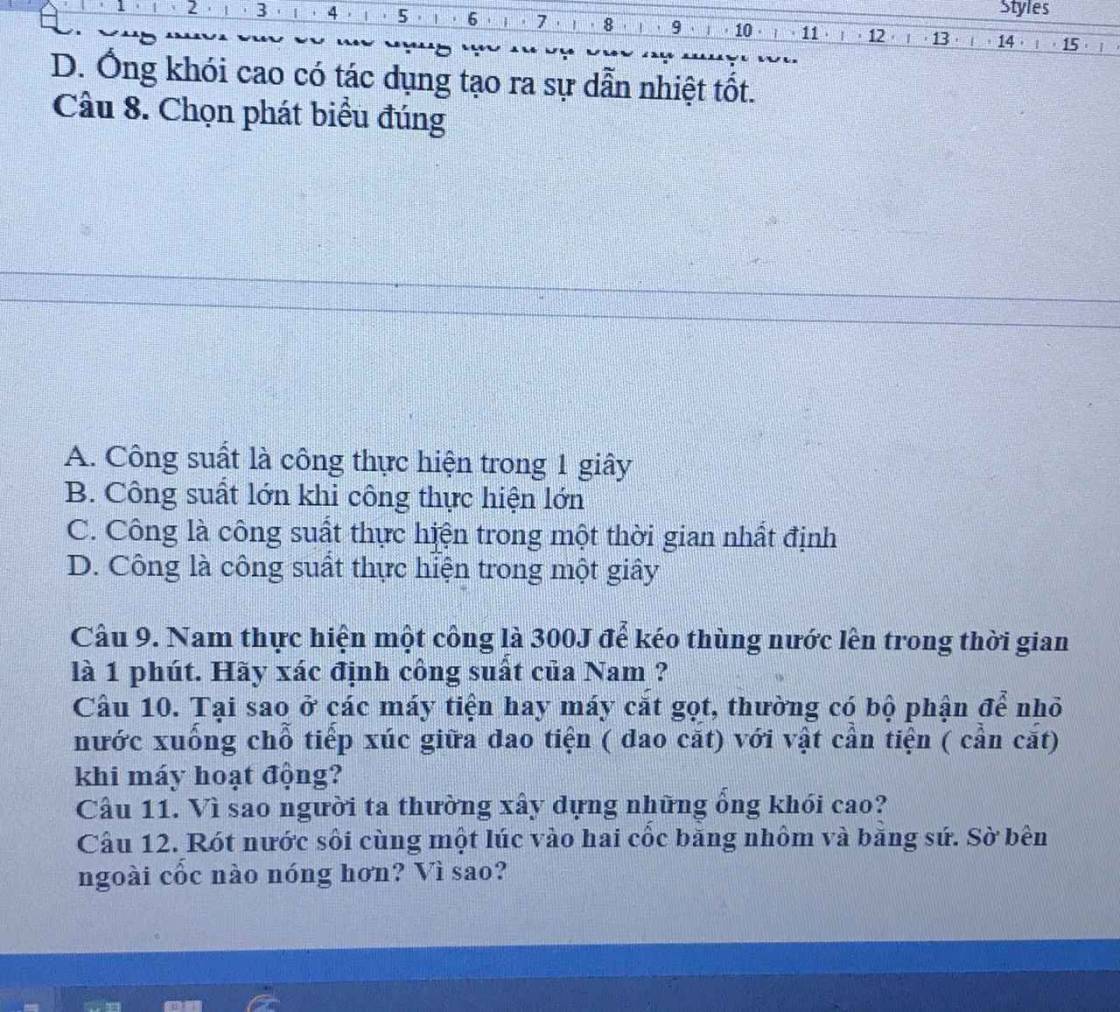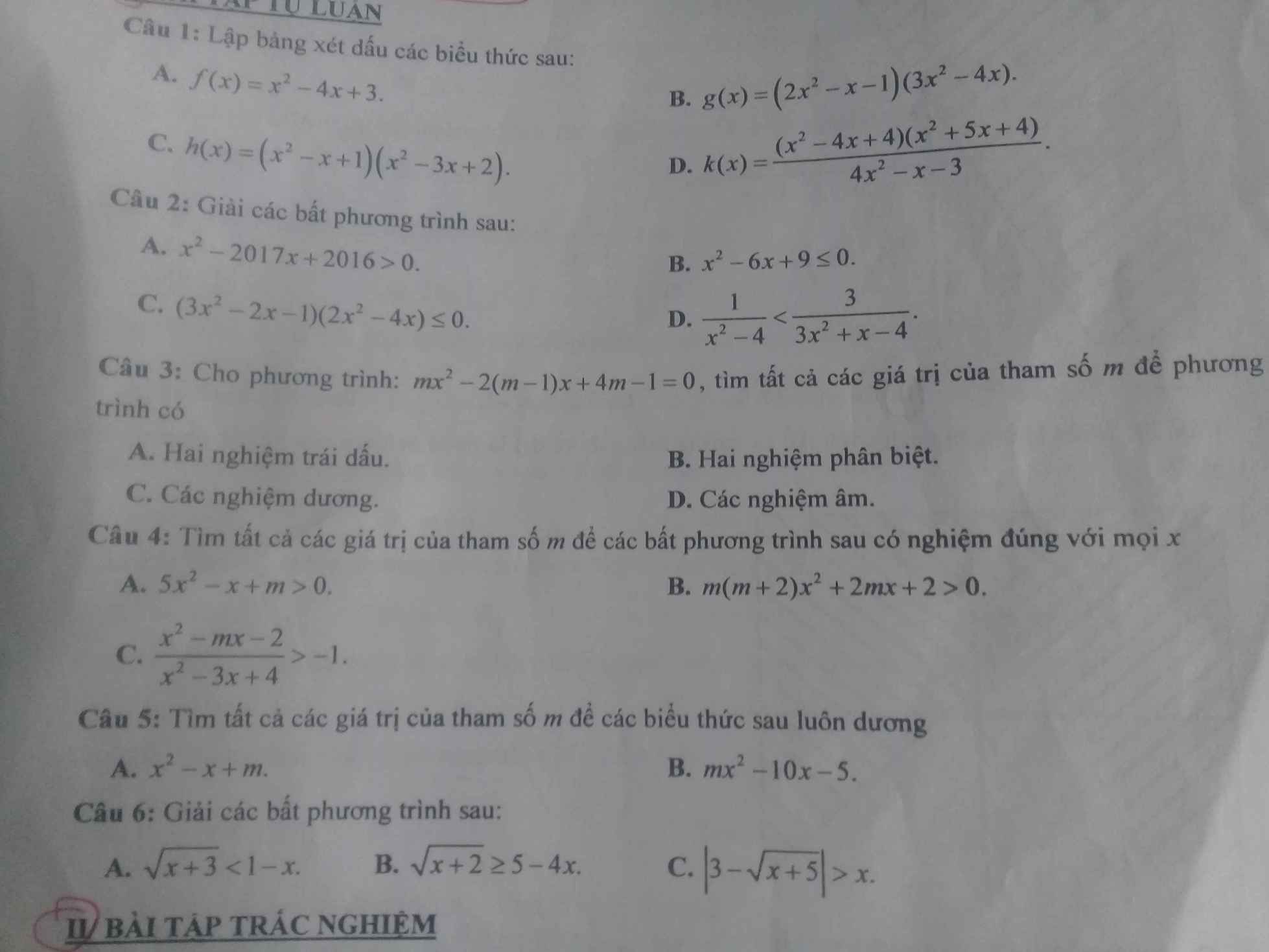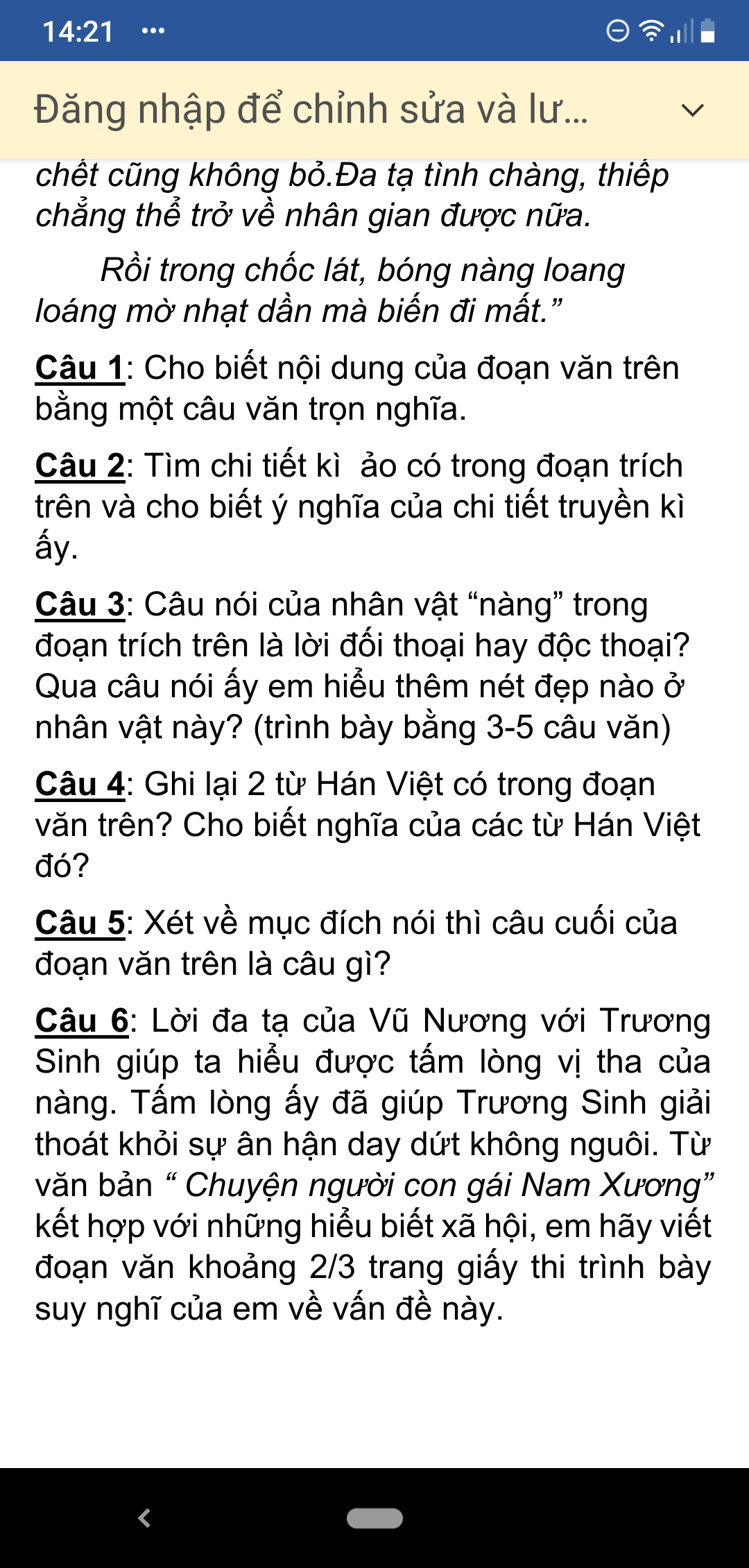 mn ơi giúp e với !! e bị vướng ở Bài 1 câu a) ạ
mn ơi giúp e với !! e bị vướng ở Bài 1 câu a) ạ
Hãy nhập câu hỏi của bạn vào đây, nếu là tài khoản VIP, bạn sẽ được ưu tiên trả lời.


43.a) \(m_{HCl\left(bđ\right)}=200.10,95\%=21,9\left(g\right)\)
=> \(n_{HCl\left(bđ\right)}=\dfrac{21,9}{36,5}=0,6\left(mol\right)\)
b) HCl phản ứng với NaOH là HCl dư
\(HCl+NaOH\rightarrow NaCl+H_2O\)
\(n_{HCl\left(dư\right)}=n_{NaOH}=0,05.2=0,1\left(mol\right)\)
=> \(n_{HCl\left(pứ\right)}=n_{HCl\left(bđ\right)}-n_{HCl\left(dư\right)}=0,6-0,1=0,5\left(mol\right)\)
c) \(CaCO_3+2HCl\rightarrow CaCl_2+H_2O+CO_2\)
\(n_{CaCO_3}=\dfrac{1}{2}n_{HCl\left(pứ\right)}=0,25\left(mol\right)\)
=> \(m_{CaCO_3}=0,25.100=25\left(g\right)\)
d) \(n_{CO_2}=\dfrac{1}{2}n_{HCl\left(pứ\right)}=0,25\left(mol\right)\)
=> \(V_{CO_2}=0,25.22,4=5,6\left(l\right)\)
e) \(m_{ddsaupu}=25+200-0,25.44=214\left(g\right)\)
Dung dịch A gồm CaCl2 và HCl dư
\(n_{CaCl_2}=\dfrac{1}{2}n_{HCl\left(pứ\right)}=0,25\left(mol\right)\)
\(C\%_{CaCl_2}=\dfrac{0,25.111}{214}.100=12,97\%\)
\(C\%_{HCl\left(dư\right)}=\dfrac{0,1.36,5}{214}.100=1,71\%\)

Câu 2
\((1) MnO_2 + 4HCl \to MnCl_2 + Cl_2 + 2H_2O\\ (2) Cl_2 + H_2 \xrightarrow{as} 2HCl\\ (3) 3Cl_2 + 2Fe \xrightarrow{t^o} 2FeCl_3\\ (4) 2FeCl_3 + Fe \to 3FeCl_2\\ (5) 2NaOH + Cl_2 \to NaCl + NaClO + H_2O\)
\((1) 4Al + 3O_2 \xrightarrow{t^o} 2Al_2O_3\\ (2) 2Fe + 3Cl_2 \xrightarrow{t^o} 2FeCl_3\\ (3) C + O_2 \xrightarrow{t^o} CO_2\\ (4) 2KMnO_4 \xrightarrow{t^o} K_2MnO_4 + MnO_2 + O_2\\ (5) 4P + 5O_2 \xrightarrow{t^o} 2P_2O_5\\ (6) 2KClO_3 \xrightarrow{t^o} 2KCl + 3O_2\\ (7) Fe + H_2SO_4 \to FeSO_4 + H_2\\ (8) Cu + 2H_2SO_4 \to CuSO_4 + SO_2 + 2H_2O\\ (9) 2Fe + 6H_2SO_4 \to Fe_2(SO_4)_3 + 3SO_2 + 6H_2O\\ (10) 2Al + 6H_2SO_4 \to Al_2(SO_4)_3 + 3SO_2 + 6H_2O\)

\(a,B=4\sqrt{x+1}-3\sqrt{x+1}+\sqrt{x+1}+2\sqrt{x+1}=4\sqrt{x+1}\\ b,B=8\Leftrightarrow4\sqrt{x+1}=8\\ \Leftrightarrow\sqrt{x+1}=2\\ \Leftrightarrow x+1=4\\ \Leftrightarrow x=3\left(tm\right)\)

ĐKXĐ: \(x\notin\left\{0;-9\right\}\)
Ta có: \(\dfrac{1}{x+9}-\dfrac{1}{x}=\dfrac{1}{5}+\dfrac{1}{4}\)
\(\Leftrightarrow\dfrac{20x}{20x\left(x+9\right)}-\dfrac{20\left(x+9\right)}{20x\left(x+9\right)}=\dfrac{4x\left(x+9\right)+5x\left(x+9\right)}{20x\left(x+9\right)}\)
Suy ra: \(4x^2+36x+5x^2+45x=20x-20x-180\)
\(\Leftrightarrow9x^2+81x+180=0\)
\(\Leftrightarrow x^2+9x+20=0\)
\(\Leftrightarrow x^2+4x+5x+20=0\)
\(\Leftrightarrow x\left(x+4\right)+5\left(x+4\right)=0\)
\(\Leftrightarrow\left(x+4\right)\left(x+5\right)=0\)
\(\Leftrightarrow\left[{}\begin{matrix}x+4=0\\x+5=0\end{matrix}\right.\Leftrightarrow\left[{}\begin{matrix}x=-4\left(nhận\right)\\x=-5\left(nhận\right)\end{matrix}\right.\)
Vậy: S={-4;-5}

Câu 8: A
Câu 9: Tóm tắt:
\(A=300J\)
\(t=1p=60s\)
======
\(\text{℘ }=?W\)
Công suất của Nam:
\(\text{℘ }=\dfrac{A}{t}=\dfrac{300}{60}=5\left(W\right)\)


3.
TH1: \(m=0,pt\Leftrightarrow2x-1=0\Leftrightarrow x=\dfrac{1}{2}\)
TH2: \(m\ne0\)
a, Phương trình có hai nghiệm trái dấu khi \(m\left(4m-1\right)< 0\Leftrightarrow0< m< \dfrac{1}{4}\)
b, Phương trình có hai nghiệm phân biệt khi \(\Delta'=-3m^2-m+1>0\)
\(\Leftrightarrow\left[{}\begin{matrix}m< \dfrac{-1-\sqrt{13}}{6}\\m>\dfrac{-1+\sqrt{13}}{6}\end{matrix}\right.\)
c, Phương trình có hai nghiệm dương khi:
\(\left\{{}\begin{matrix}\Delta'>0\\x_1x_2>0\\x_1+x_2>0\end{matrix}\right.\) \(\Leftrightarrow\left[{}\begin{matrix}m< -\dfrac{1+\sqrt{13}}{6}\\m>1\end{matrix}\right.\)


3x.(x-2)-x2+2x=0
⇔3x2-6x-x2+2x=0
⇔2x2-4x=0
⇔2x(x-2)=0
\(\Leftrightarrow\left[{}\begin{matrix}2x=0\\x-2=0\end{matrix}\right.\Leftrightarrow\left[{}\begin{matrix}x=0\\x=2\end{matrix}\right.\)
vậy x=0 và x=2
3x(x-2)-x^2+2x=0
<=>3x(x-2)-x(x-2)=0
<=>(3x-x)(x-2)=0
<=>2x(x-2)=0
<=>2x=0 hoặc x-2=0
<=>x=0 hoặc x=2






1a.
\(R_{23}=\frac{R_2.R_3}{R_2+R_3}=\frac{30.60}{30+60}=20\Omega\)
\(R_{+đ}=R_1+R_{23}=15+20=35\Omega\)